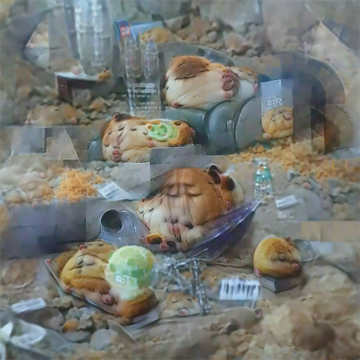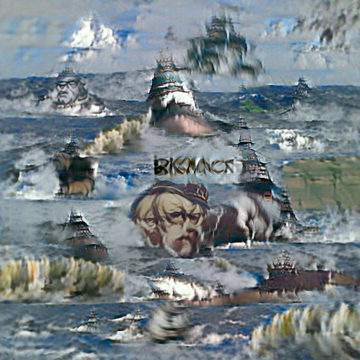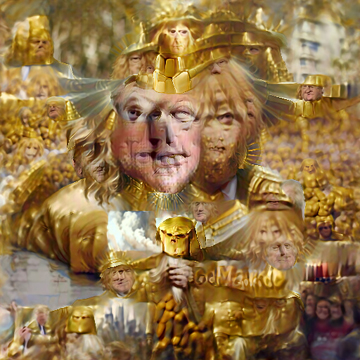|
| |
|
| |
|
|







|
|
TCHS 4O 2000 [4o's nonsense] alvinny [2] - csq - edchong jenming - joseph - law meepok - mingqi - pea pengkian [2] - qwergopot - woof xinghao - zhengyu HCJC 01S60 [understated sixzero] andy - edwin - jack jiaqi - peter - rex serena SAF 21SA khenghui - jiaming - jinrui [2] ritchie - vicknesh - zhenhao Others Lwei [2] - shaowei - website links - Alien Loves Predator BloggerSG Cute Overload! Cyanide and Happiness Daily Bunny Hamleto Hattrick Magic: The Gathering The Onion The Order of the Stick Perry Bible Fellowship PvP Online Soccernet Sluggy Freelance The Students' Sketchpad Talk Rock Talking Cock.com Tom the Dancing Bug Wikipedia Wulffmorgenthaler |
|
bert's blog v1.21 Powered by glolg Programmed with Perl 5.6.1 on Apache/1.3.27 (Red Hat Linux) best viewed at 1024 x 768 resolution on Internet Explorer 6.0+ or Mozilla Firefox 1.5+ entry views: 4045 today's page views: 250 (8 mobile) all-time page views: 3386291 most viewed entry: 18739 views most commented entry: 14 comments number of entries: 1226 page created Fri Jun 20, 2025 05:54:33 |
|
- tagcloud - academics [70] art [8] changelog [49] current events [36] cute stuff [12] gaming [11] music [8] outings [16] philosophy [10] poetry [4] programming [15] rants [5] reviews [8] sport [37] travel [19] work [3] miscellaneous [75] |
|
- category tags - academics art changelog current events cute stuff gaming miscellaneous music outings philosophy poetry programming rants reviews sport travel work tags in total: 386 |

| ||
|
Just to switch up the pace a little, I figured I'd cover some of the cool (or at least, funny) developments going on in the technological space. It's definitely an exciting area to be in, career prospects aside in this ultra-practical land, and the local computing fraternity is undeniably riding high for now with NUS supposedly ranked fourth in the world for computer science & information systems - but personally, it's perhaps best to take that with a shaker full of salt. The initiative towards interdisciplinary learning does seem to have been maintained, with a new combined College of Humanities and Sciences launched as planned, so here's to future students wandering the roads less travelled, and not grade-grub too much (well, unless they've a scholarship to maintain) Overall demand will likely be sustained, current A.I. hype aside, from how various great powers are pulling out the stops to amass know-how and personnel (not necessarily in an above-board manner, if history has anything to teach) in the technology dimension of the burgeoning New Cold War, with ecosystems already bifurcating. Singapore has for one already hinted at requiring over a million additional workers trained in digital skills, and in recognition of that, here's a brief survey of some more-recent advances that have caught the imagination: Uniqueness, Ubiquity  More talent in that index finger than Picasso! (Source: flickr.com) Sure, I've ragged on modern art previously, but let's put it this way: I stick food on the wall in kindergarten and get rapped on the knuckles, but some guy duct-tapes a banana to another wall a couple of years back, and got paid US$120,000. Was it the sensually-provocative slant of the fruit, the complex flourishes in the wrinkles of the tape? The heck if I know. Yes, Dadaism, but one can argue that urinals don't putrefy after a few weeks, and the guilty party involved at least had the basic decency to take responsibility by signing their name to the evidence then. In this case, the bananas exhibit would eventually be enhanced by a visitor adding "Epstein didn't kill himself", which was somehow derided entirely without irony as "conspiracy theory graffiti", in the face of the rather more ridiculous reality of a common Cavendish costing upwards of a hundred grand (Lucille Bluth, eat your heart out). The last I heard of it, the unconscionably-overpriced banana had been consumed by a performance artist (good riddance, I say), and when contemporary art pieces appear routinely improved by passers-by, one has to wonder whether the profession has fallen - if just a little - from its former rarefied heights. Mind, to the less-cultured crowd, there's always been an obvious reason as to why a few daubs of paint - if one's lucky - can change hands for hundreds of millions: plain money laundering. From its entirely-subjective valuation, art is pristinely-suited towards transferring humongous sums of cash with plausible cause; if the taxman and other governmental enforcers come calling as to why a sheet of notebook paper with "pay bearez sixty millions" scribbled on it in crayon had been exchanged at par, one can always wave a banana in their faces. Indeed, the natural takeaway from a Department of Homeland Security representative claiming that "there has not been an art dealer or collector convicted for laundering money through art" should really be that: this method seriously works! Now, while there has been work done on predicting the price of artworks at auctions, one gathers that much of the prepping had been performed behind the scenes. You'd need the artist, of course, ideally with a catchy background story, but raw skill perhaps matters less nowadays than ever before - whither the breakout stars from, say, the thousands upon thousands of technically-immaculate practitioners in Dafen? The artist's works would be collected on the cheap, and the myth - and valuations - then built up, often after his passing, which is why so many famous painters and composers died dead broke. Apparently, the CIA had quite the hand in promoting modern art for their own nefarious purposes: read Finks for a more-complete telling of their literary interventions in Cold War I.  The face one makes at a free US$411,000 (Source: knowyourmeme.com) If you thought the above was crazy enough, that's not even the beginning of it. The new fad has been non-fungible tokens (NFT), which are essentially official records on some recognized blockchain, that verify one's ownership of some digital property; the direct analogue to the legacy art world would be the Geneva Freeport, where near-priceless artpieces of any provenance can change hands without moving an inch (we've eagerly copied the concept, though it hasn't quite taken off here just yet) The thing about NFTs, then, is that the underlying digital asset is perfectly and infinitely reproducible*; copies of the famous Overly Attached Girlfriend meme featured above have been plastered all over the Internet for years, for example. Yes, I've not been over-enthused with Rothkos, but they do have a certain subtlety and presence up close (still wouldn't pay ten mils for one, though). Yes, certain types of art such as Rodin's bronze sculptures can be duplicated en masse from the mould, but one supposes each of the physical objects can conceivably accumulate its own idiosyncrasies and history. For NFTs, though, the zeroes and ones of all copies are forever identical - and to top it off, current implementations of NFTs often encode just a weblink to the asset, and of course, it's hardly guaranteed that the relevant server won't change hands someday, or simply replace or overwrite the file being referred to. [*N.B. This doesn't apply to fungible cryptocommodity tokens such as Bitcoin, but I'm not going to get drawn into that here] Well, those with slightly longer memories might recognize this as more or less the cryptocollectible craze from 2018 - with CryptoKitties perhaps the representative success story - and after Elon Musk's gone self-referential in hawking a techno song about NFTs as an NFT, it's perhaps only to be expected that the bubble's deflating somewhat. Hopefully Li Shengwu can get his paper on NFTs on the blockchain before the fashion goes entirely over until the next parabolic surge in crypto prices, then. Cyborg Imagination, From Language Two particular critiques about the current direction of A.I. have been that it has perhaps been focused on images over other modalities, and that it is unclear whether the trained models actually understand what they are supposed to do, despite being able to achieve raw performance on the level of humans on well-defined tasks. Often, changing the environment ever so slightly can cause the erstwhile-excellent A.I. model to fail disastrously - which can have very real implications as with a medical chatbot suggesting that a patient kill themselves (then again, it could have just gone full Marvin the Paranoid Android) To this, the response appears to have largely been to begin from ever-larger language models, a trend that had been popularized with BERT, and that has only been accelerating. Other than obvious advantages in machine translation, sheer volume of text has made applications such as resurrecting the deceased from their online writings possible, as just patented by Microsoft (well, we tried to warn you). Unfortunately, this line of attack has also meant that the top-of-the-line language models such as GPT-3 have been restricted to those tech giants and research institutions with the resources to compile them, though there have been some public attempts at replication. It's the combination of text and images that has seen some of the most impressive results in recent months, however, much of it coming from the OpenAI group. First, it seems that using image caption text as additional data for learning visual concepts can greatly improve model reliability, which one supposes is only to be expected from how models have been routinely repurposed. Rather more extraordinary, in my view, is the ability of cutting-edge models to generate images - and to impeccable levels of quality, note - combining multiple concepts, again exploiting text-image pairs. Dalí might have been proud... or at any rate, prouder of it than at a taped-up banana. Well, that model's closed-source too, but I did manage to get my hands on some DeepDaze code utilizing OpenAI's CLIP mentioned in the first example above, and which seems also influenced by Google's DeepDream, key difference being that DeepDaze admits a text prompt. How it works appears to be using CLIP to guide a generative adversarial network, in the sense of gradually evolving an initial (random) image, towards satisfying the desired text. A subreddit has been created to showcase some outputs, but I saw no reason not to crank out some NFT bait of my own...  Prompt Text: a fat hamster eating while sleeping I don't know if the lumps are more golden hamster or freshly-baked pastries, but I know that they look delicious. Water bottles or decanters? Hard to tell too.  Prompt Text: all the people living life in peace Given that the command prompt for DeepDaze is "imagine", a quote from Lennon's song of the same name seemed only appropriate. Quite a lot of "V for peace" hand signs and proto-peace symbols abound, if one squints hard enough, and perhaps a dove in the middle, and dabs of the Rastafarian colours. Would be passable as album art - I've certainly seen worse.  Prompt Text: bismarck in motion king of the ocean [N.B. And not forgetting, the more anthropomorphic versions...] More song lyrics, this from Sabaton's Bismarck, as bookending the previous blog post. The model tried to picture the guy himself, it seems, and I think the concept of "motion" got expressed pretty vividly. Much waves, much powah.  Prompt Text: apes together stronk and stonks only go up How's it with slang? Unfortunately, I don't see much stonks being represented here, but I'll take the green uparrow. Efforts were made towards fists in solidarity, and there's a dumbbell in there somewhere. Like the granite wash background too.  Prompt Text: the golden glorious god emperor of mankind And finally, what does the machine think of the GOD-EMPEROR OF MANKIND? All that gold down to the curls, all that majesty, the not-overly-large hand grasping the sceptre of the world... truly, the classical attributes of divinity have been rendered forth! The robots are awakening, I tell you! Many Faces As to images alone, superresolution has made it into Adobe Photoshop, although the same caveats remain about the technique possibly hallucinating objects that weren't there. Most of the drama continues to revolve around faces, with the latest complaint being that image-completion algorithms tended to autocomplete men with a suit 43% of the time, and women with a low-cut top or bikini 53% of the time (racist, sexist, yadda). Number one question might, however, be on what the men were autocompleted wearing (or not) the other 57% of the time, and how exactly did the research group collect the underlying data. Personally, if the algo matches my head with Frank Zane's bod, I won't be doing much complaining, and perhaps it might come as a surprise to some sections of the academic world on what many of the ladies are actually discontented about? Raising the dead, predicting political persuasions and coughing up wads of cash are old hat for A.I. by now, and the scary thing is, there doesn't seem a limit as to how convincing simulations can get; the day when people won't be able to believe the evidence of their own eyes draws ever closer, and there appears nothing anybody can do about it, sans extremely heavy-handed surveillance and control, which kinda defeats the purpose. Food & Drink Bananas and edible hamsters have unavoidably led to this, but before continuing I'd just like to state that no inflation, my ass. My accustomed neighbourhood takeout of noodles with egg has gone from S$4.80 to S$6.00 in one fell swoop, which appears repeated all over. The effects of running the money printer hot have to hit Main Street eventually, surely? It's tough to tell how the food delivery companies are doing, given that airlines are entering the competition, but their profit has already come under public scrutiny all the more due to the shift towards their service no thanks to the pandemic. I'd definitely not begrudge the riders their (possibly large) cut, although one wonders if it should be a long-term employment option, especially for those who clearly have other talents. To me, Singapore seems ripe for the revival of a near-forgotten technology: pneumatic tube transport (i.e. same general concept as the T-shirt cannon). Set up a hub-and-spoke system from major shopping centres, industrial kitchens and other distribution points, and one can have packages pew pew-ing their way across the country at the speed of, well, air. I mean, having a chap cycle a couple of kilometres to deliver a single meal feels slightly inefficient, or maybe that's just me. Other than that, there's been local work on wringing water out of air, robotic bartenders at Orchard Road, and continued incursion of meat substitutes - it seems humans were meant to be omnivores after all. And oh, the latest findings on eggs have them associated with cardiovascular and cancer mortality, but I'm keeping an open mind on this. Next: Yuppies And Other Tribes
|
|||||||
 Copyright © 2006-2025 GLYS. All Rights Reserved. |
|||||||